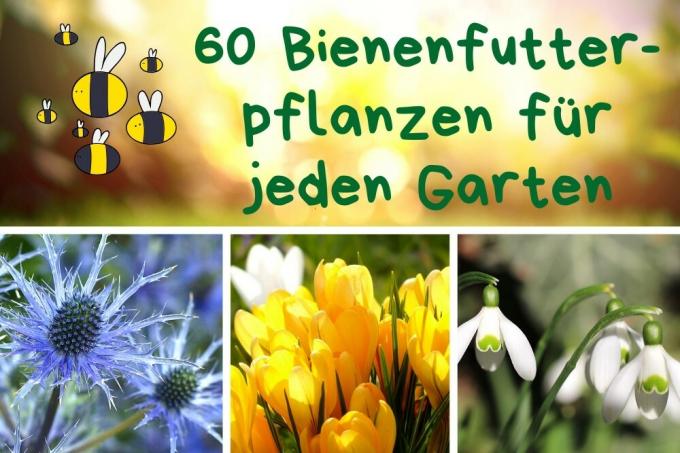
table of contents
- 20 ornamental flowers and perennials as bee fodder plants
- 20 bee-friendly shrubs and trees
- 6 climbing plants for bees
- Bee-friendly: 14 herbs
Bee forage plants are among the most important crops for wild bees, honey bees and bumblebees. They provide the insects with enough food throughout the year. 60 bee-friendly plants are presented to you in this article.
20 ornamental flowers and perennials as bee fodder plants
Numerous plants that can be cultivated in your own garden are described as bee-friendly. Bee forage plants provide various types of bumblebees and bees with the two most important foods that are necessary for the supply of colony or solitary specimens:
- Pollen
- nectar
To provide insects with a simple source of food, you should grow flowering bee forage plants. Flowering plants and ornamental perennials, which have as much an effect on bees as dandelions (Taraxacum sect. Ruderalia). Many of them attract with their aromatic scent. 20 suitable bee forage plants can be found in the following list:
1. Alpine rockcress (Arabis alpina)
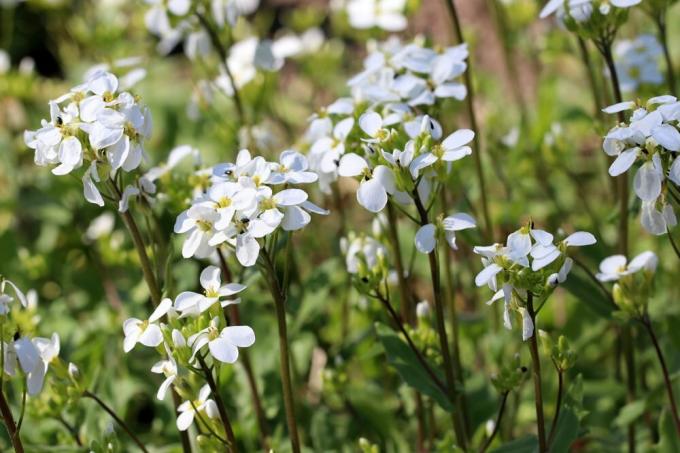
- Flowering period: mid-March to autumn or winter
- Flower color: white
- Height: 10 to 40 cm
2. Mountain aster (Aster amellus)

- Flowering period: July to mid-October
- Flower color: blue-violet
- Height: 10 to 70 cm
3. Blood cranesbill (Geranium sanguineum)
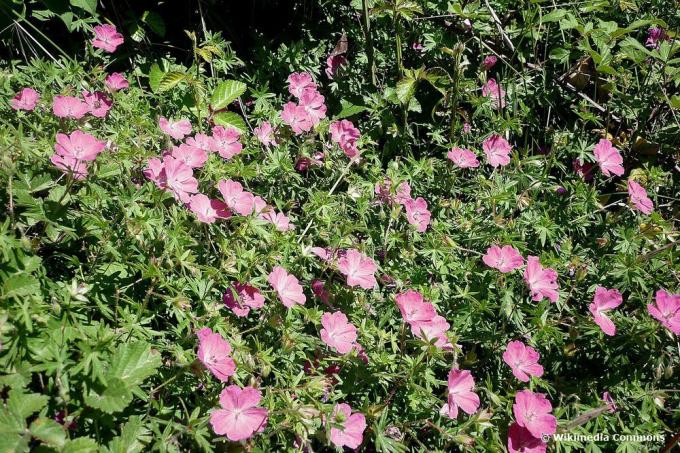
- Flowering period: mid-May to the end of September
- Flower color: reddish purple
- Height: 15 to 60 cm
4. Christmas rose (Helleborus niger)
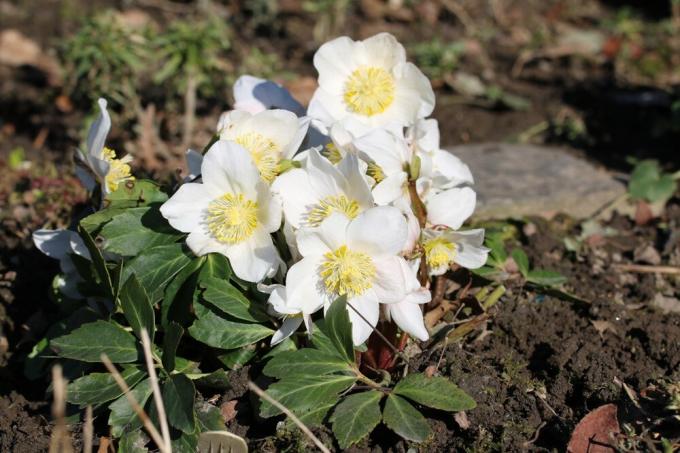
- Flowering period: November to May (depending on the climate)
- Flower color: white, red
- Height: 10 to 40 cm
5. Spotted lungwort (Pulmonaria officinalis)

- Flowering period: March to mid-May
- Flower color: red, later blue
- Height: 10 to 40 cm
6. Smooth-leaf aster (Symphyotrichum novi-belgii)

- Flowering period: September to the end of October
- Flower color: white, violet, crimson, lavender
- Growth height: up to 200 cm
7. Autumn anemone (Anemone hupehensis)

- Flowering period: July to mid-October
- Flower color: white, pink, red, purple
- Height: 5 to 12 cm
8. Evergreen candytuft (Iberis sempervirens)
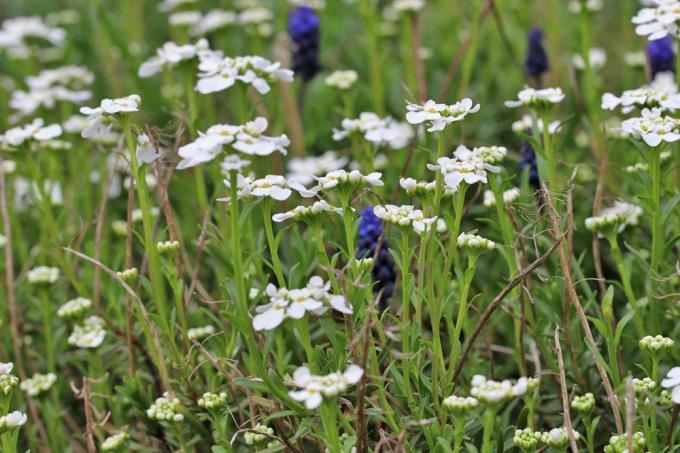
- Flowering period: May
- Flower color: white, later soft pink
- Growth height: up to 30 cm
9. Little snowdrop (Galanthus nivalis)
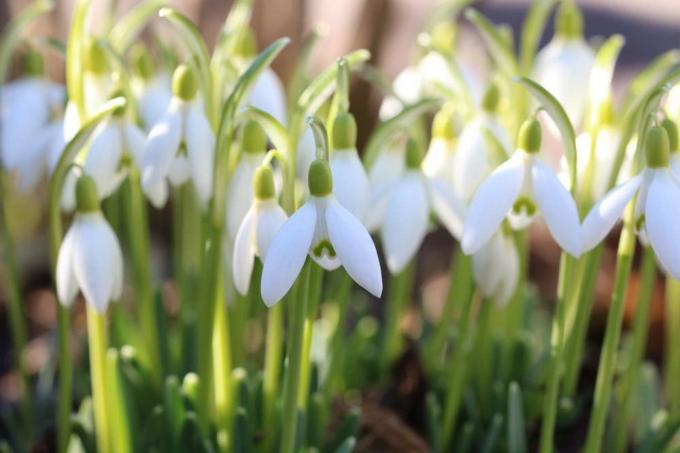
- Flowering period: beginning of February to mid-March, rarely April
- Flower color: white
- Height: 5 to 18 cm
10. Small grape hyacinth (Muscari botryoides)
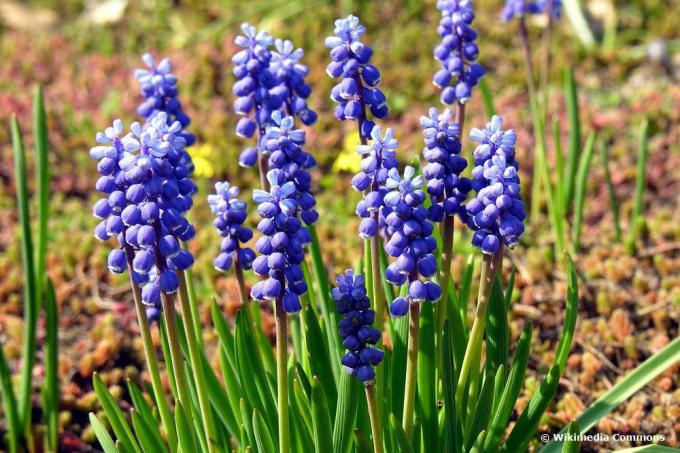
- Flowering period: April to mid-June
- Flower color: blue
- Growth height: up to 20 cm
11. Cornflower (Centaurea cyanus)

- Flowering period: late May to late September
- Flower color: intense blue or purple
- Height: 15 to 90 cm
12. Crocus (crocus)

- Flowering period: February to March, September to November (depending on the species)
- Flower color: white, yellow, lavender, violet
- Growth height: up to 15 cm
13. Lenten rose (Helleborus orientalis)
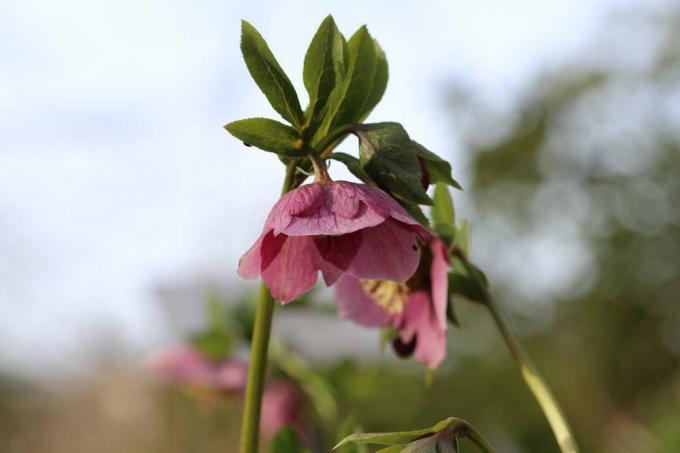
- Flowering period: February to mid-April
- Flower color: white, green, pink, light purple
- Height: 25 to 40 cm
14. Man litter (Eryngium)
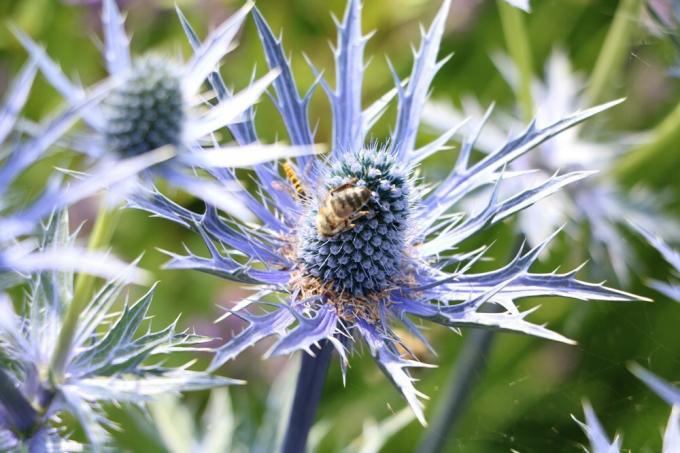
- Flowering period: July to August
- Flower color: blue, green, purple (depending on the species)
- Growth height: up to 100 cm
15. Märzenbecher (Leucojum vernum)
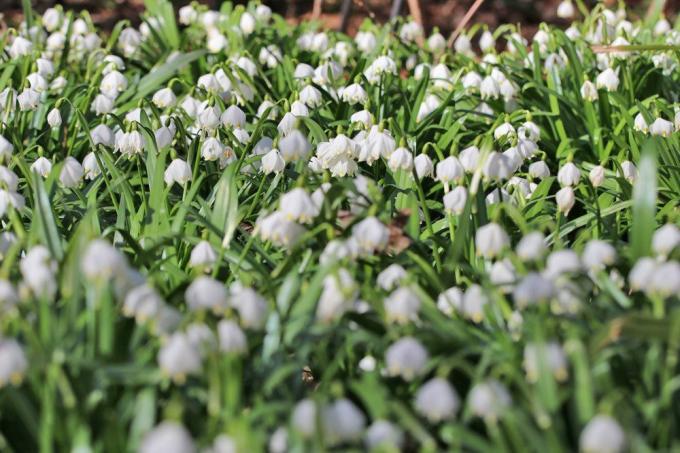
- Flowering period: February to mid-April
- Flower color: white
- Height: 15 to 30 cm
16. Snow heather (Erica carnea)

- Flowering period: January to mid-April
- Flower color: light pink, pink, red
- Growth height: up to 30 cm
17. Sunflower (Helianthus annuus)
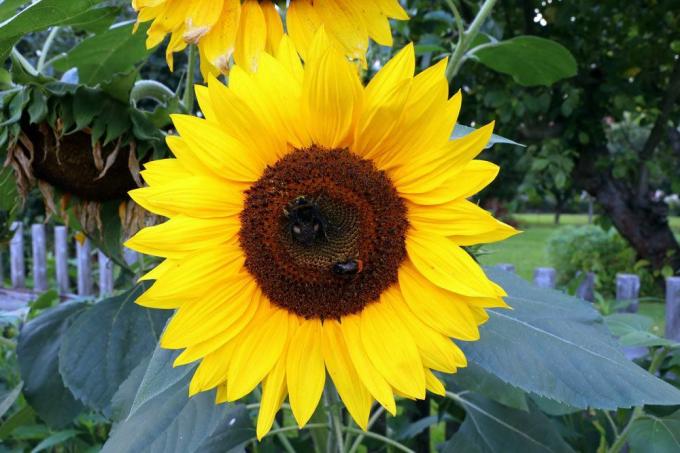
- Flowering period: late June to late September
- Flower color: yellow
- Height: 100 to 300 cm
18. Turkish poppy seeds (Papaver orientale)

- Flowering period: mid-May to late June
- Flower color: intense red
- Growth height: up to 100 cm
19. Winterling (Eranthis hyemalis)

- Flowering period: beginning of February to mid-March
- Flower color: yellow
- Height: 5 to 20 cm
20. Two-leaved squill (Scilla bifolia)

- Flowering period: beginning of March to April
- Flower color: blue, gray-blue
- Height: 5 to 20 cm
Note: Don't be surprised if the number of butterflies in your garden increases when you grow bee forage plants. Butterflies also benefit from plants that are bee-friendly and provide large amounts of nectar.
20 bee-friendly shrubs and trees
Woods are among the most popular bee forage plants in your own garden. Many trees and bushes are bee-friendly and provide the insects with sufficient food for the appropriate season. Like the species already featured, they bloom at certain times of the year, something to keep in mind when planning. Grow different bee forage plants for each season from the beginning of spring to the end of autumn so that the bees do not have to starve. These plants are recommended:
1. Apple (Malus domestica)

- Flowering period: May
- Flower color: white, pale pink
- Height: 800 to 1,500 cm
2. Beard flowers (Caryopteris)

- Flowering period: August to the end of September
- Flower color: blue, purple
- Growth height: up to 70 cm
3. Bee tree (Tetradium daniellii)

- Flowering period: early June to late August
- Flower color: white, light brown
- Height: up to 2,000 cm (depending on location)
4. Blackberry (Rubus sect. Rubus)

- Flowering period: May to the end of August
- Flower color: white, pink
- Height: 50 to 300 cm
5. False jasmine (Philadelphus coronarius)

- Flowering period: June to July
- Flower color: white
- Growth height: up to 400 cm
6. Buckthorn (Rhamnus frangula)

- Flowering period: late May to September
- Flower color: white
- Height: 200 to 400 cm
7. Common hazel (Corylus avellana)
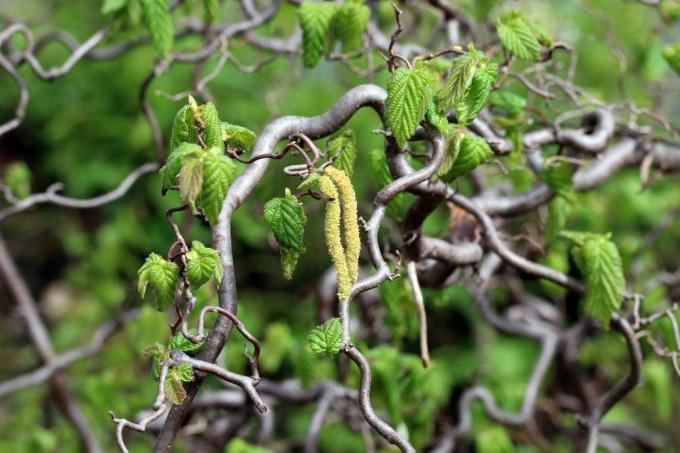
- Flowering period: February to March, less often from January
- Flower color: yellowish
- Growth height: 500 to 600 cm
8. Common rock pear (Amelanchier ovalis)
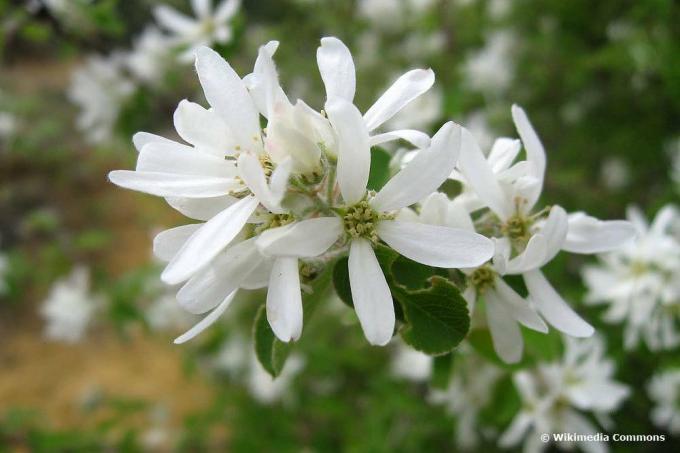
- Flowering period: April to May
- Flower color: white
- Growth height: up to 250 cm
9. Common Oregon grape (Mahonia aquifolium)

- Flowering period: March to the end of June
- Flower color: yellow
- Height: up to 180 cm
10. Hibiscus (Hibiscus moscheutos)
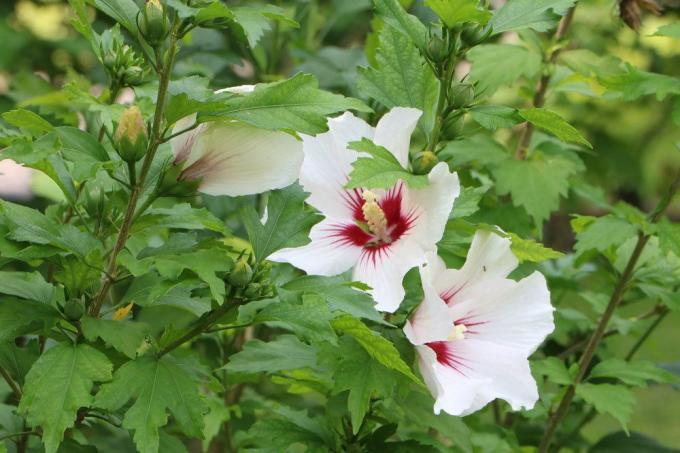
- Flowering period: June or July
- Flower color: white, pink
- Growth height: up to 200 cm
11. Raspberries (Rubus idaeus)

- Flowering period: mid-May to August
- Flower color: white
- Height: 60 to 200 cm
12. Japanese pagoda tree (Styphnolobium japonicum)

- Flowering period: August to the end of October
- Flower color: creamy white
- Height: up to 3,000 cm
13. Currants (Ribes)
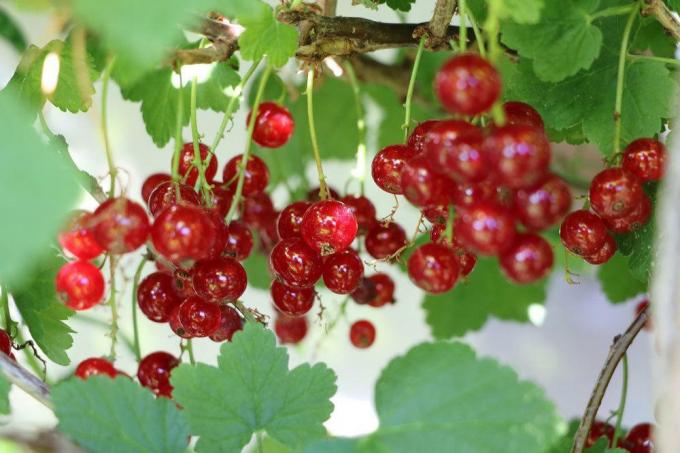
- Flowering period: April to May
- Flower color: white, yellow, pink, red, purple
- Height: 100 to 150 cm
14. Cornelian cherry (Cornus mas)

- Flowering period: beginning of March to April
- Flower color: golden yellow
- Height: 400 to 800 cm
15. Privet (Ligustrum vulgare)
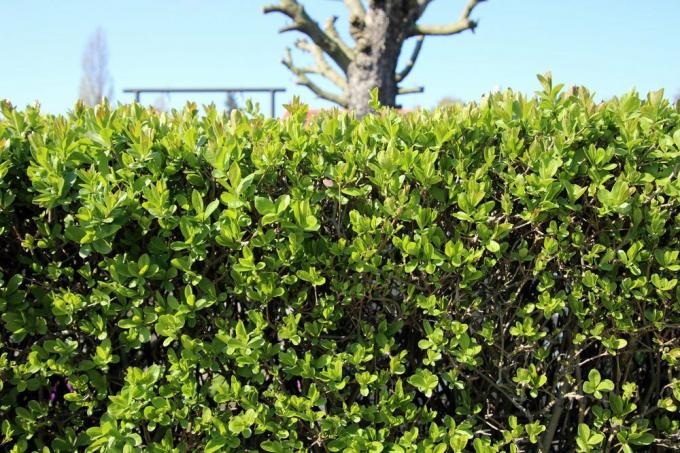
- Flowering period: June to the end of July
- Flower color: white, cream colored
- Height: 150 to 450 cm
16. Sal willow (Salix caprea)
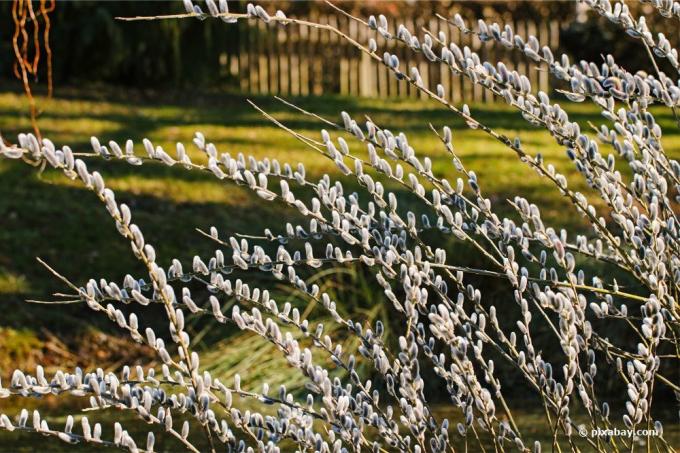
- Flowering period: beginning of March to April, less often at the end of February
- Flower color: silver, yellow (male), greenish (female)
- Height: 200 to 1,000 cm
17. Sloe (Prunus spinosa)
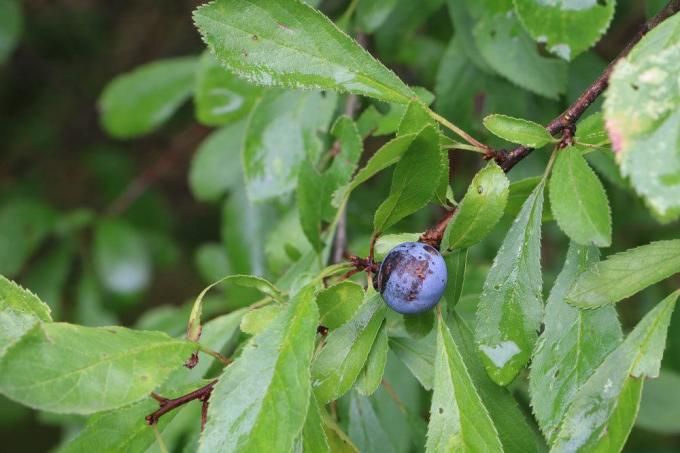
- Flowering period: March to mid-April
- Flower color: white
- Height: up to 500 cm (depending on upbringing)
18. Gooseberries (Ribes uva-crispa)
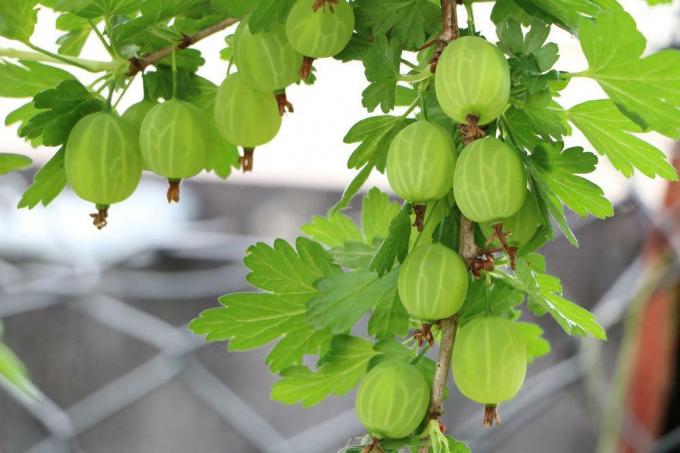
- Flowering period: April to mid-May
- Flower color: green, red
- Height: 60 to 150 cm
19. Sweet cherry (Prunus avium)
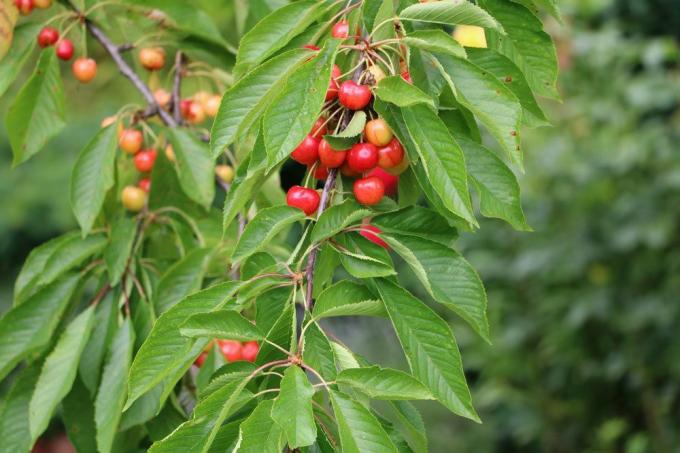
- Flowering period: April to the end of May
- Flower color: white
- Height: 2,000 to 3,000 cm
20. Hawthorn (Crataegus)

- Flowering period: April to May
- Flower color: white, pink, red
- Height: 200 to 1,200 cm
Tip: If you are a fan of roses, you should only rely on unfilled wild rose species to make them accessible to bees. The bee-friendly species include the yellow rose (Rosa foetida), Bibernell rose (Rosa spinosissima), and tuft rose (Rosa multiflora), cinnamon rose (Rosa majalis) and classics such as the dog rose (Rosa canina), potato rose (Rosa rugosa) or the apple rose (Rosa villosa).
6 climbing plants for bees
A wide variety of climbing and climbing plants can also be bee-friendly. As bee fodder plants, they offer a great advantage for small gardens as they can be cultivated in all possible forms. A privacy screen is welcome and is visited by bees and bumblebees during the flowering period. 6 types can be used for this purpose:
1. Broad-leaved pea (Lathyrus latifolius)

- Flowering period: June to the end of August
- Flower color: pink, red
- Height or length: 50 to 300 cm
2. Chinese wisteria (Wisteria sinensis)
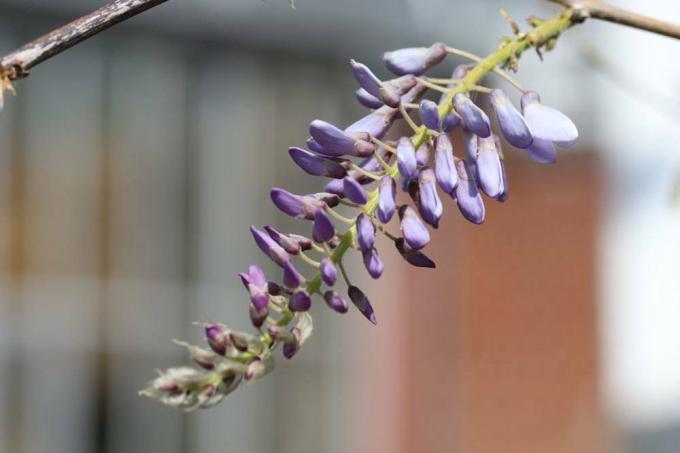
- Flowering period: up to 1,000 cm (self-supporting), 2,000 to 3,000 cm (with climbing aid)
- Flower color: light blue, bluish purple
- Height or length:
3. Real honeysuckle (Lonicera caprifolium)

- Flowering period: May to mid-July
- Flower color: white to pink
- Height or length: up to 200 cm
4. Ivy (Hedera helix)

- Flowering period: September to late October or early November
- Flower color: yellow-green
- Height or length: 2,000 to 3,000 cm
5. Clematis (Clematis)
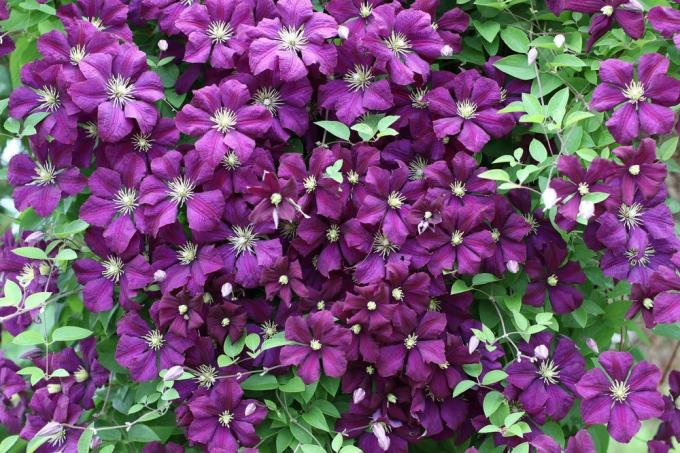
- Flowering period: beginning of June to August
- Flower color: white, yellow, cream-colored, green, pink, red, blue, purple (depending on the type)
- Height or length: 200 to 600 cm
6. Wild grape (Vitis vinifera subsp. sylvestris)
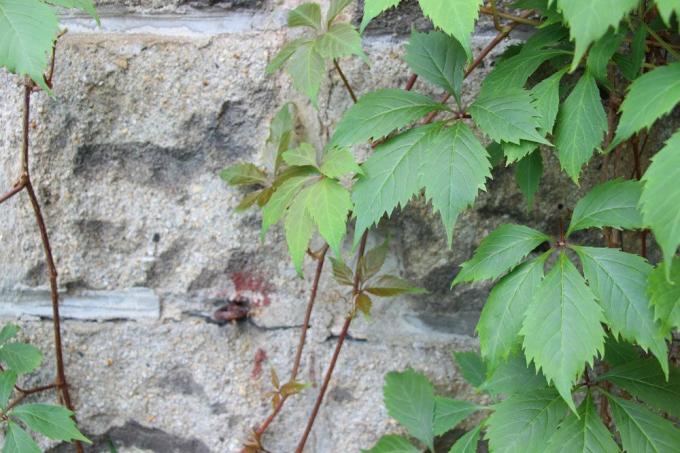
- Flowering period: June to the end of July
- Flower color: yellow-green
- Height or length: 500 to 4,000 cm
Note: The cultivation of the dioecious bryony (Bryonia dioica) can also be offered. It is specially approached by the bryony sand bee (Andrena florea), which only uses the species of the genus as a source of food.
Bee-friendly: 14 herbs
Bees are not only attracted by trees or flowering plants. If you maintain an herb garden, you can look forward to buzzing visitors when you let the useful plants develop their flowering. This is how classic medicinal plants and culinary herbs are made bee-friendly. It is a good idea to always plant more plants than you need so that you can enjoy some of the specimens when they are in bloom. If you want to attract bees with herbs, bet in the following ways:

- Savory (Satureja hortensis)
- Borage (Borago officinalis)
- Dill (anethum graveolens)
- Common yarrow (Achillea millefolium)
- Nasturtium (Tropaeolum majus)
- Lavender (Lavandula)
- Lovage (Levisticum officinale)
- Mint (mentha)
- Oregano (Origanum vulgare)
- Parsley (Petroselinum crispum)
- Rosemary (Salvia rosmarinus)
- Sage (Salvia officinalis)
- Thyme (thymus)
- Lemon balm (Melissa officinalis)
Borage in particular is known to be a real bee magnet that you should give a chance. A great advantage of herbs as bee fodder plants is the ability to keep them in pots. Even urban gardens, terraces or balconies can be made bee-friendly.
